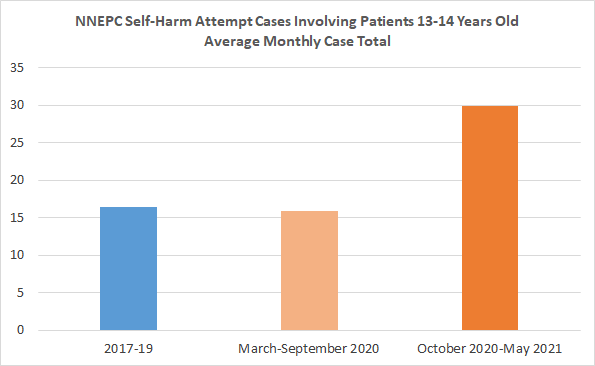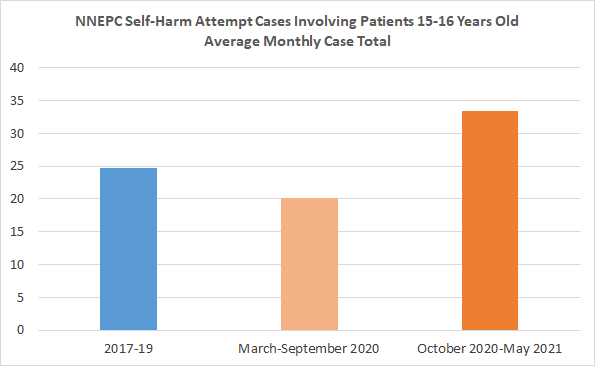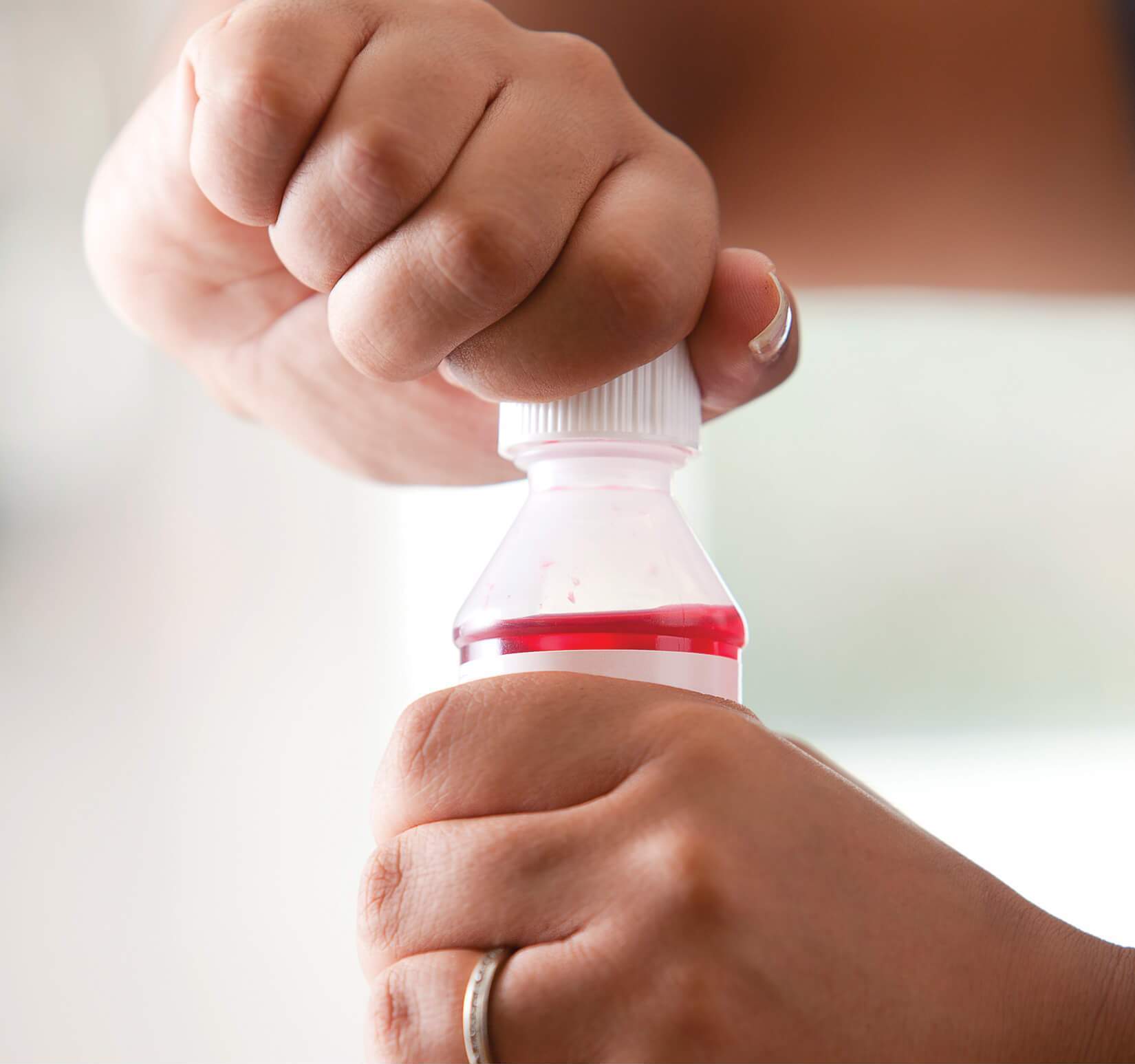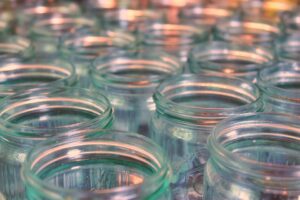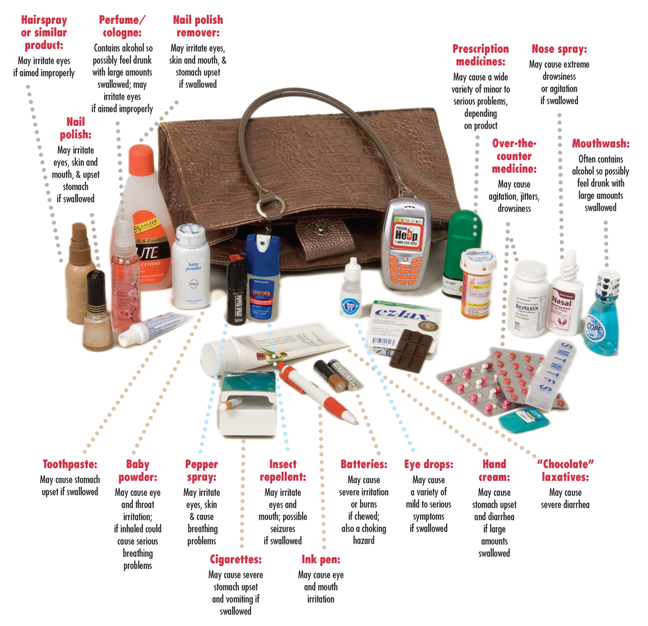In the second episode of Poison Center Pointers, our poison experts discuss three of our most common arthropod pests: ticks, mosquitos and brown-tail moth caterpillars. What are the risks from these critters and what are some ways you can safely deal with them?
Subscribe to Poison Center Pointers on Podbean, Amazon Music, Apple Podcasts, Google Podcasts or Spotify.
TRANSCRIPT
Disclaimer: Poison Center Pointers is brought to you by the Northern New England Poison Center. This podcast is not to replace timely advice or recommendations. If you have an actual poisoning emergency, scenario, or question, contact the Northern New England Poison Center by calling 1-800-222-1222, text the word ‘POISON’ to 85511, or chat online at nnepc.org.
Chris: Welcome to Poison Center Pointers, a podcast presented to you by the Northern New England Poison Center.
♪Upbeat music♪
Chris: Hello to all our listeners out there and welcome to Poison Center Pointers. Today is Episode 2and we’re keeping this summer themed today. We’re talking about insects and repellents.
Karlee: Boo insects!
Carolyn: Yay summer!
[Laughter]
Chris: Boo insects, I second that. My name is Chris and I’m joined by two of my co-hosts and colleagues. Karlee, welcome back!
Karlee: Thanks for having me!
Chris: And Carolyn, thank you for being here.
Carolyn: Thanks Chris, thanks for having me.
Chris: Carolyn’s been here since insects were invented, so she has plenty of expertise, once again.
Carolyn: Thanks, Chris… yes, I invented them, thank you.
Karlee: Thanks for that…
[Laughter]
Chris: So, just to get into again what exactly we’re doing here. We’re looking to share our knowledge and experience dealing with everyday situations that we manage at the poison center. Our goal is to keep our community safe and by preventing a poisoning, or making sure you know what to do if a poisoning does occur. Hopefully this episode is a little bit more entertaining than last week when we just talked about um, ourselves!
[Laughter]
Chris: So, insects and repellents… I think we should probably start with everyone’s least favorite insect or so I would think, in northern New England, ticks!
Carolyn: Yes, we do not like ticks, ick. Ticks are an insect that are found in the woods, in the tall grass, sometimes in your yard, but usually it’s more like the woods or the grass, where they’re found. They crawl around, they don’t fly, they don’t jump, but, if you walk through the grass where they found, they will attach themselves to you.
Chris: Yes they will.
Carolyn: They feed on the blood of animals and unfortunately we are animals too, so… yuck!
Karlee: That is why they grab on. One of the reasons we worry about them is because they are a vector for disease.
Carolyn: Lots of different kinds of disease. You’ve heard about Lyme disease, that’s the more common one but there are others too. We’re not going to get too detailed, basically it is way more common for it to be Lyme disease.
Chris: In this region of the country, anyway.
[Karlee and Carolyn agree]
Chris: How about a little bit more about ticks…
Carolyn: Sure!
[Laughter]
Carolyn: Once they feed they fall off. They don’t stay attached, they don’t crawl inside, they don’t burrow and stay. They just put their head in, and they feed. And once they finish feeding, they fall off. In certain stages their life they can be really small, like, nearly impossible to see, the size of a poppy seed or the tip of a pencil. And they can be active year round even here in northern New England, ‘cause sometimes we don’t get that long hard frost or lots of snow, like last winter. So even though they’re more common in the warmer months they actually can be found year round.
Chris: Do you guys have any of your own horror stories about encounters with ticks?
[Carolyn laughs]
Carolyn: Well! My first, and only encounter actually happened here at the poison center.
Karlee: Oh?
Carolyn: Yeah, thanks Karlee!
Karlee: What?!
[Laughter]
Carolyn: Well, Karlee has dogs and we share a seat here at the poison center. Not at the same time, but we share the same desk…
[Karlee laughing]
Carolyn: …when she’s not here, we share, and I think that she probably brought it in from her dogs. So, I found one here for the first time ever about a month ago.
Chris: Good point, right! We don’t usually find ticks inside a building.
Karlee: But dogs can bring them in…
Carolyn: …or people!
Chris: Any sort of animal.
Carolyn: And Karlee!
[Laughter]
Chris: So just a little bit of background. Why don’t we talk about some good prevention techniques? I think that’s probably what people would want to know most about.
Karlee: Yeah, so first off, we can try to avoid areas where we know ticks are prevalent which would be in the woods, grassy areas, bushes, that sort of thing. But, in northern New England, pretty hard to avoid those areas, especially when we want to get out in the summer.
Carolyn: But, if you’re hiking you can stay in the middle of the path.
Karlee: Exactly!
Carolyn: Even things as simple as that can make a difference.
Karlee: But, if you’re unable to do that there are other things, as far as you know, using clothing. You can wear long clothing to, you are obviously going to be wearing clothing…
[Laughter]
Carolyn: That’s why I was laughing…
Karlee: But long sleeves…
Carolyn: Long pants…
Chris: Long socks….
Karlee: Long pants, tuck your pants into your socks, things like that. And also you can you use preventative sprays. So, DEET, there is picaridin…
Chris: Natural products, quite a few products available.
Carolyn: Light-colored clothing can be helpful ‘cause you can see the ticks crawling up. They don’t generally attach right away. They want to crawl up and find a spot like your under arms, behind your ears…
Karlee: Crevices…
Carolyn: Crevices.
Chris: Back of the knee…
Carolyn: Belly button, ick.
Karlee: Hairline…
Carolyn: But, they crawl up, so they crawl up first. They generally don’t attach to your ankles or feet. So, if you have light-colored clothing, and you’ve tucked your pants into your socks like Karlee was mentioning, then you can maybe see them crawling up before they attach.
Chris: How about a theoretical, here? Say you took all those proper preventative techniques, and you come home after a nice hike in summer, and you find a tick on yourself. What do we do?
Carolyn: Well, actually even before that, no matter what you do, when you get home do a tick check.
[Chris and Karlee agree]
Carolyn: But, if you do have one, then you want to grab tweezers or tick removal tool, a lot of stores sell them… If you have tweezers you just grab it close to the skin, at the tip of the body right before the head, grab it, not too hard, you don’t want to rupture it. Just pull very slowly so that the head comes out.
Karlee: Try to not jerk or twist it. I want you to remove it as fast as you can, but also make sure you’re getting the head because of the head is retained in, there is just a greater chance to get diseases from it, or infections, things like that.
Carolyn: Or, you can do what I did when I found it here at work. I screamed, and then I grabbed it, and threw it to the ground.
[Laughter]
Carolyn: Luckily it had literally just attached, because it came right out.
Chris: But in all seriousness don’t throw it on the ground.
[Laughter]
Carolyn: No, I didn’t keep it there. You want to put it in rubbing alcohol. That will kill it, and it will preserve it. Don’t flush, you’re not killing it if you flush it. You want to put it in rubbing alcohol or crush it.
Chris: And important to note actually, if you do put it in the rubbing alcohol which will kill it, it will actually preserve it, if you’re concerned it could be harboring a disease. There are sources we have available in northern New England to have it identified. For more information you can certainly call us, chat us, text us, and we’re happy to assist. How about some common pitfalls or kind of, old school methods for how we remove ticks? We should probably bring those up.
[Carolyn and Karlee laugh]
Carolyn: Thanks for looking at me for that Chris.
[Laughter]
Carolyn: Sometimes people will call, and say they’ve used the match method. That means you light a match, blow it out, put it on the back of the tick. That is actually never a good idea. It might get the tick to remove its’ head, but he’s more likely to regurgitate the virus or bacteria, because that’s found in the salivary glands. You are more likely to get sick if it has one of these diseases.
Chris: Also, putting a burning match to your skin, you know…
Carolyn: That’s true, that’s not a good idea. I agree Chris.
[Laughter]
Carolyn: The other one is Vaseline, covering it in Vaseline, because people think it will smother it. They actually only breathe 1-2 times an hour, so you’re going to be sitting there a long time, and then you’ll have to grab the tweezers!
[Laughter]
Karlee: And those things are really just delaying the actual removal and so…
[Chris and Carolyn agree]
Chris: And there are situations where people worry, “Could I have been exposed to one of those tick-borne illnesses?” When will we recommend reaching out to your doctor or your primary care provider?
Karlee: Yeah, so, after the removal it’s important to do typical first aid. So washing really well with soap and water to the area, and if you have found it is imbedded, follow up with your primary care provider and just see if there’s any further evaluation or management. Or, certainly if you feel symptomatic at all follow up with them as well.
Carolyn: You don’t, you know, it’s not emergent. If you find the tick in the middle of the night, you don’t need to call the doctor’s office in the middle of the night, you can wait ‘til the next day. It doesn’t happen that fast.
Chris: Another important resource that we should probably refer you also is the federal CDC’s website, cdc.gov. They do have a web page dedicated to ticks, and they have all sorts of helpful hints and tips that we went over so you might also find that to be a good resource
Carolyn: Yes, absolutely.
Karlee: Just to elaborate on symptoms, if you feel that you are having fever, muscle aches, you notice that classic bullseye rash, you could ‘Google’ photos of that, that’s pretty typical for Lyme disease… but anything like that as far as symptoms go, I’d want you to follow up with your primary care provider.
Carolyn: Absolutely.
Chris: Yes. I think the next type of insect that unfortunately we encounter way too much this time of year: mosquitoes.
[Karlee and Carolyn agree]
Carolyn: Ew, yeah, not my fav.
Chris: You all might be familiar.
[Laughter]
Carolyn: Probably, if you live here.
Chris: Any pointers you all have about where you are most likely to encounter mosquitoes, and just ways to prevent exposure?
Carolyn: Sure, mosquitoes are, they like water. That’s where they reproduce and that’s where they tend to hang out. So, morning when there’s dew on the grass and in the evening, you have to be careful. You want to cover up, you can use some repellents, we’ll talk about repellents later… the other thing is, they tend to, as I mentioned, reproduce in water, so if you have any open water like standing buckets, your wheelbarrow is turned over and gets filled up in a rainfall, empty it, because that’s where the larvae are and you’ll increase the amount of insects in your yard if you have those things.
Chris: But say, you do want to spend some time outside, and you don’t want to be covered in big red bumps for the next 2 to 3 days, what do we usually encounter that people like to use here?
Karlee: Yeah you can prevent bites by some different methods. One would be using a spray that contains DEET. That would kind of be your two for one, to cover you for ticks and mosquitoes. There’s also some natural products like lemongrass, citronella, and there’s mosquito dunks…
Chris: That’s a product you can put in a standing pool of water and it’ll help get rid of any of the insect larvae that are there.
Carolyn: And remember mosquitoes, they’re annoying and we don’t like to get bit by them, but they also, they can carry diseases. We don’t generally see a lot of that in northern New England, but you know, like with anything we just want to prevent exposure.
Chris: Sure, sure. The next group of insects – something where we actually worry occasionally about medical emergencies so we should probably talk about that – and that is stinging insects. Bees, hornets, ants can bite you, pretty irritating so, do you guys have any helpful hints for our listeners out there?
Carolyn: Sure, so the first thing you want to do is get rid of the stinger if it’s still in there. They don’t all leave the stinger in there, but instead of inspecting it carefully just grab a credit card or a license, scrape across the bite site. That’ll remove the stinger if there’s one there. Don’t use tweezers or squeeze because if there’s a venom sac, it’ll hurt way more.
Karlee: And just squeeze the venom further in, rather than just removing it all together.
Carolyn: Exactly, and like with everything else, wash with soap and water, that’s the first thing you’re going to want to do. And if there’s a little swelling then apply ice. A little bit of swelling, a little bit of pain, normal, it’ll go away in a pretty short period of time. That’s nothing to worry about. But, sometimes you do have to worry.
Karlee: Yeah, that would be anaphylaxis. So you can be allergic when you get stung by any of these insects that we’re talking about right now. Usually if you’re going to see signs of anaphylaxis it’ll be within the first 15 minutes of the exposure, sometimes it can be delayed an hour or two, but most commonly you’ll see it pretty soon. And that would be, you know, difficulty breathing, swelling in your neck, hives, anything like that – if you have any symptoms you need to call 911 because it is a medical emergency.
Carolyn: Right.
Chris: So, you step into a big nest of hornets, which hopefully that never happens to anyone out there…
Carolyn: Eesh, yeah… run screaming, ouch. If you get stung by, the number they say is 50 or more, that you can actually get poisoned from the venom. Fifty is a rough number, and obviously you’re not counting when you’re getting chased by a nest…
[Chris and Karlee laugh]
Chris: That would be pretty impressive.
Carolyn: … or a swarm of bees. If you get multiple stings, just call us. You still want to do the same stuff, you want to scrape the sites, you want to wash, but there might, even if you’re not allergic, there might be another thing to worry about there, so be careful.
Chris: Yeah. I think probably my least favorite group of insects that we unfortunately do encounter this time of year would be caterpillars.
Carolyn: Caterpillars? You know you can outrun them Chris? Why caterpillars?
[Karlee laughs]
Chris: Because they look terrifying!
[Laughter]
Carolyn: Have you seen a tick?!
[Laughter]
Chris: Okay. To our listeners out there, feel free to ‘Google’ what these species look like. But…
Carolyn: They’re pretty!
[Chris laughs]
Chris: There are a couple species that we worry about particularly in northern New England: tussock caterpillars, gypsy moths, and of course the brown tail moth.
Carolyn: The dreaded brown tail moth…
Chris: Now for our listeners in New Hampshire and Vermont, don’t fret too much, they’re not really in that area.
Carolyn: That’s brown tail moths.
Chris: Yes, what did I say?
Carolyn: Specifically the brown tail moth.
Chris: Yes, brown tail moths are located more in coastal Maine and Cape Cod.
Carolyn: Lucky us…
[Laughter]
Chris: Yes, lucky us. So this might be a little bit more relevant to those in in coastal Maine, but really the same recommendations go for most of these caterpillars so, what do we worry about?
Carolyn: Yeah, go ahead Karlee.
Karlee: Yeah, as a general rule of thumb, we typically just say don’t touch the hairy ones because really the issue with these is the hairs.
Carolyn: Right.
Karlee: The hairs are very irritating when they get on your skin. They can float in the air and you can breathe them in, and it can be very irritating to your airway and cause breathing difficulty which is one of the things we do worry about and would have you watch out for. The hairs can also stay active in the environment even if they’re not on the actual caterpillar for months.
Carolyn: Months!
Karlee: Yeah, so, really important as far as prevention goes.
Chris: And what are some of those prevention techniques?
Carolyn: Yeah, you don’t want to leave your clothes hanging outside if you’re in an area where these caterpillars are found. You want to wash clothes inside, and dry them inside, use hot water, just to make sure that you get rid of the hairs and you render them inactive. And just understand that some people are just more allergic to them. Some people just have, some people don’t have any reaction at all, some have a little bit, and some are just miserable for weeks.
[All agree]
Chris: You’ll be aware if you’re sensitive to it.
Carolyn: Absolutely.
Chris: And we do have treatment remedies. I don’t know if you want to expand on that, Karlee? As a pharmacist she might know about some of that.
Karlee: Yeah, so some things that we have recommended to people could be poison ivy wipes, you could use calamine lotion, if it’s itchy you could use an antihistamine like Benadryl, over the counter things. And actually, if you go to your local pharmacy you can ask them, in this area they’ll probably be aware of some of the things that can be used. And one thing that is common is half a tube of hydrocortisone, half a tube of diphenhydramine, and witch-hazel that you would apply topically.
Carolyn: They call that the magic potion or magic lotion.
Chris: Yes, something to talk to your pharmacist about or the staff in the pharmacy because they might have it available already. One small piece I’d like to talk about with caterpillars that we do encounter occasionally, obviously because we deal with a lot of exposures in little kids – what are we worried about if a child swallows a caterpillar?
Carolyn: Oh, that can be a problem with the hairs in the mouth and the throat. It can cause breathing difficulty…
Karlee: Swelling…
Chris: It can be a medical emergency. If something like that happens we do urge you to get in contact with us.
Carolyn: Right, and again we’re talking about the hairy caterpillars.
Chris: Yes.
Carolyn: Kids eat lots of bugs…
[Chris laughs]
Chris: Which you can always feel free to call us about regardless.
[Karlee laughs]
Chris: So we should probably talk about some of the defense, the repellents, some of the commercially available products we have to prevent against this sort of thing.
Carolyn: Yeah, before we talk about the exact products, the most important thing is to read the label. I know that sounds silly, but they’re very highly regulated, pesticides are, and they’ll tell you exactly how to use them. Do not apply them more often than it states, and if it says don’t use on children it’s because they have a high level of the pesticide. So, just be very careful. You don’t want to saturate clothing for example, while it’s on your child or your body ‘cause then you’re being exposed to it constantly. You just want to be careful there.
Karlee: There are different percentages of pesticides depending on the product that you have. Some are just meant to spray on clothes, and you let them dry before you put them on. You’re not supposed to apply them to your skin. There can be pretreated tents, or things like, but yeah, read the label.
Chris: We got a lot of calls this time of year and that exact thing. So what kind of products are available? I know we touch kind of briefly on it but, what do we most commonly encounter?
Karlee: There are permethrin products that can certainly be irritating to the skin. If you do use that product incorrectly just call us and we can talk through all of the concerns for toxicity. There is DEET, which definitely can be a concern, especially when ingested it can be very toxic. There’s also natural products like eucalyptus, lemongrass oil, citronella candles, and picaridin is another option as well.
Carolyn: And even the natural products can be a problem if they’re ingested. They’re all pretty safe to use when used correctly, but it sometimes even if you use as instructed you know, you put it on the child and they lick their arm. I mean, we see that all the time.
[Karlee laughs]
Chris: Happens all the time.
Carolyn: Yeah, so just call us, we can help with those things.
Chris: And not to be total bummers and make summer seem like it’s a dangerous time, we all love summer here…
[Carolyn and Karlee laugh]
Carolyn: We do!
Chris: But frankly we get a lot of calls on all these subjects. If you have any questions, please feel free to always call us, chat us or text us. In conclusion we just wanted to thank you all again for listening to this episode of Poison Center Pointers. You can always like, share, and subscribe to us on Facebook and Twitter, or you can visit our website at nnepc.org. Remember if you have an actual poisoning emergency, a scenario, or even just a question you can contact the Northern New England Poison Center by calling 1 800-222-1222, you can text the word ‘POISON’ to 85511, and you can chat online at nnepc.org. Org thanks again for joining us today. See you next time.
♪Upbeat music♪
Chris: Hey guys, it’s Chris still here with you. I actually have some additional information and clarification from one of our specialists here who reviewed our podcast. We’ll go ahead and call this the ‘fact check’ section of the podcast. As I said one of our specialists in poison information, also the public health educator for the state of Maine, Victoria is here with us. Thanks for joining!
Victoria: Sure Chris, thanks so much for letting me criticize your work!
[Chris laughs]
Chris: The internet was going to do that anyway so, might as well keep it in house. A couple, or a few points we want to go over for the last episode. What have we got?
Victoria: Yeah, not too much. But first, I did want to mention, not to get into semantics, but…
[Chris laughs]
Victoria: …ticks are not insects, they are arachnids!
Chris: Yeah, yeah.
Victoria: They are both arthropods, insects and arachnids, and some repellants can be used for both, but they’re not in the same class. And, you know we do take our arachnids pretty seriously here at the poison center so…
[Victoria laughs]
Chris: Yeah, so we won’t get into the full differences, just know that insects and arachnids are not the same thing. What else did you want to go over?
Victoria: So you had all mentioned the CDC as a great resource to learn more about the different diseases that arthropods can carry and transmit to people. I just wanted to mention that if our listeners want more information about repellants, epa.gov is a great resource for that.
Chris: We went over a couple brief products, and if you go on EPA’s website they have information on registered repellants, versus non-registered, and it really is a great resource. We did do a bit of reviewing on our end. I think there was one last point that we wanted to go over?
Victoria: Yeah, lastly, if any of our listeners do find themselves in need of any of the over the counter remedies that we had talked about, we do encourage folks to reach out to their providers if they’re feeling unwell. And, if you do find yourself in the pharmacy and have questions about products, the pharmacist there is also a great resource. But, of course, people can call us as well if they have other questions.
Chris: Is that all we had as far as criticisms, so far?
[Victoria laughs]
Victoria: Yes, that is all I had.
Chris: Yeah? Okay, well again stay tuned for episode 3, should be coming out in a couple weeks. Again, you can always call us at 1-800-222-1222, you can chat with us at nnepc.org, and text ‘POISON’ to 85511. Thanks for joining us Victoria.

